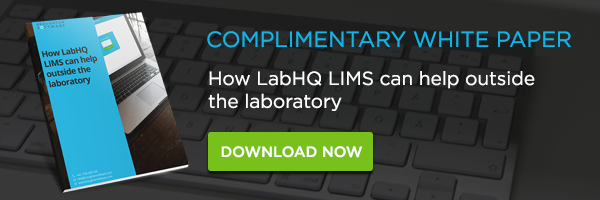
When you’re working in a fast-paced environment such as a laboratory, you might not have the time to implement improved ways of working. You may be using an existing LIMS, and are used to the workarounds and quirks of the system. If you were there when it was first implemented, you would probably be put off going through that process again. Is your LIMS good enough as it is? In this article, we highlight areas where LIMS adds the most value for laboratories. If you find your LIMS is lacking, perhaps it’s time to update.
Security
Most of us frequently use technology in our routine daily life, and so we are aware of the number of updates we must apply to our devices and software. These updates deliver not only the latest features, but most of the time, they deliver security updates. This is so we are protected from malware and viruses that we potentially expose ourselves when we surf the web. Having a LIMS can secure our test data from these risks, but it comes with the responsibility of maintaining your LIMS up to date with the manufacturers’ recommendations. A valuable aspect of LIMS is the relationship with your LIMS support team and the ease of implementing updates to your system. Typically, hosted LIMS solutions provide laboratories with an enterprise style security at a fraction of the cost it would take to maintain it in-house. This adds tremendous value to laboratories by giving them the ability to focus solely on sample analysis instead of data maintenance.
Traceability
Knowing who, what, when, and where with sample analysis is a useful for tool for any lab. For those laboratories who are regulated, it’s an imperative feature for a LIMS and could be reviewed by auditors. Traceability in LIMS can be features such as unique and sequential sample identifiers through to what equipment was used in testing a sample. As a user, you should define what values should be traceable and assess your current functionality from there. One useful example would be the traceability of stock. If tests results venture outside the expected or acceptable limits, checking which stock was used is one of the first activities in conducting initial investigations. By recording these details electronically within your LIMS, searching for the stock used on a failed test would be retrievable within seconds compared to the hours of manual sifting through paper.
Specification Management
For laboratories that are testing samples to compare to a specification, this feature adds tremendous time-saving value. Managing specifications within LIMS allows analysts to immediately compare test results. Where results are outside of limits, you can initiate investigations earlier which minimises the impact to sample turnaround time. From a quality perspective, managing specifications in LIMS also gives you the traceability to know which version of the specification was used on a sample. This gives you the control and confidence that test results will always be reported and compared with the latest approved version.
Sample Progress
Turnaround times is a common measure for most laboratories, so having the ability to monitor sample progress is a valuable feature in LIMS. A central view of all samples in the lab, responsibility, real-time status and due dates allows Lab Managers to accurately prioritise workload to ensure customer satisfaction is maintained. A LIMS should also display samples that are under investigation which highlights events that may affect turnaround times. A sample progress viewer can also be used as a communication tool for those external to the lab. By giving external users visibility, the number of queries to the lab for status updates is reduced, subsequently reducing interruptions in sample analysis.
Reporting
Test results need to be displayed in a variety of ways. Whether it’s in a professional format for customers or in charts and graphs for management to make decisions, reports are a key output of any laboratory. A LIMS should facilitate report generation and give you the ability to customise your own reports. Having the ultimate flexibility in selecting the data types you want to display and designing how it is displayed saves you time in the long run. Once your report template is designed and validated (requirements tested against a specification of what the report should deliver), generating a report should be easy as a click of a button. You should then have the confidence that the data is accurate and requires no manual checking.






